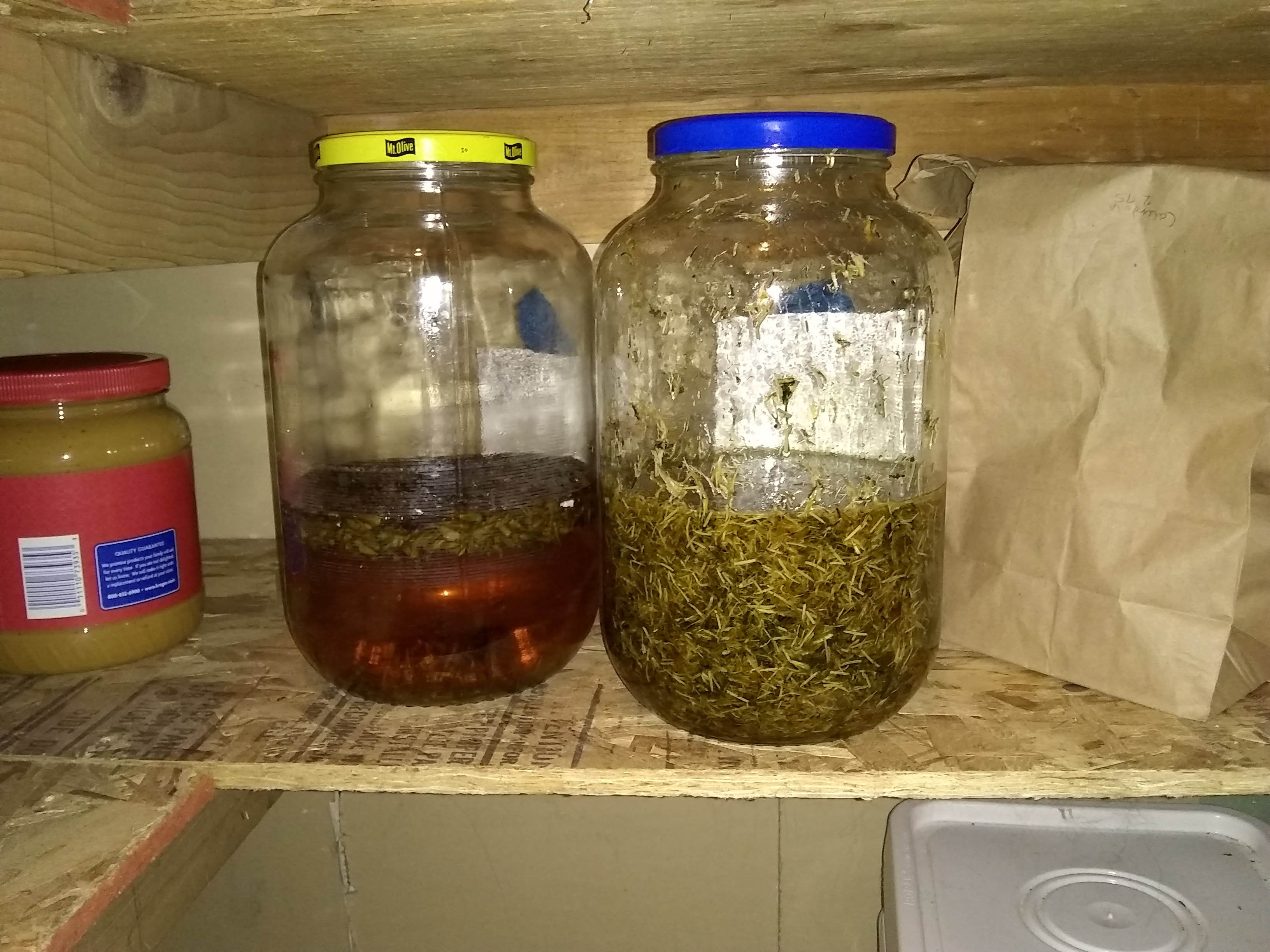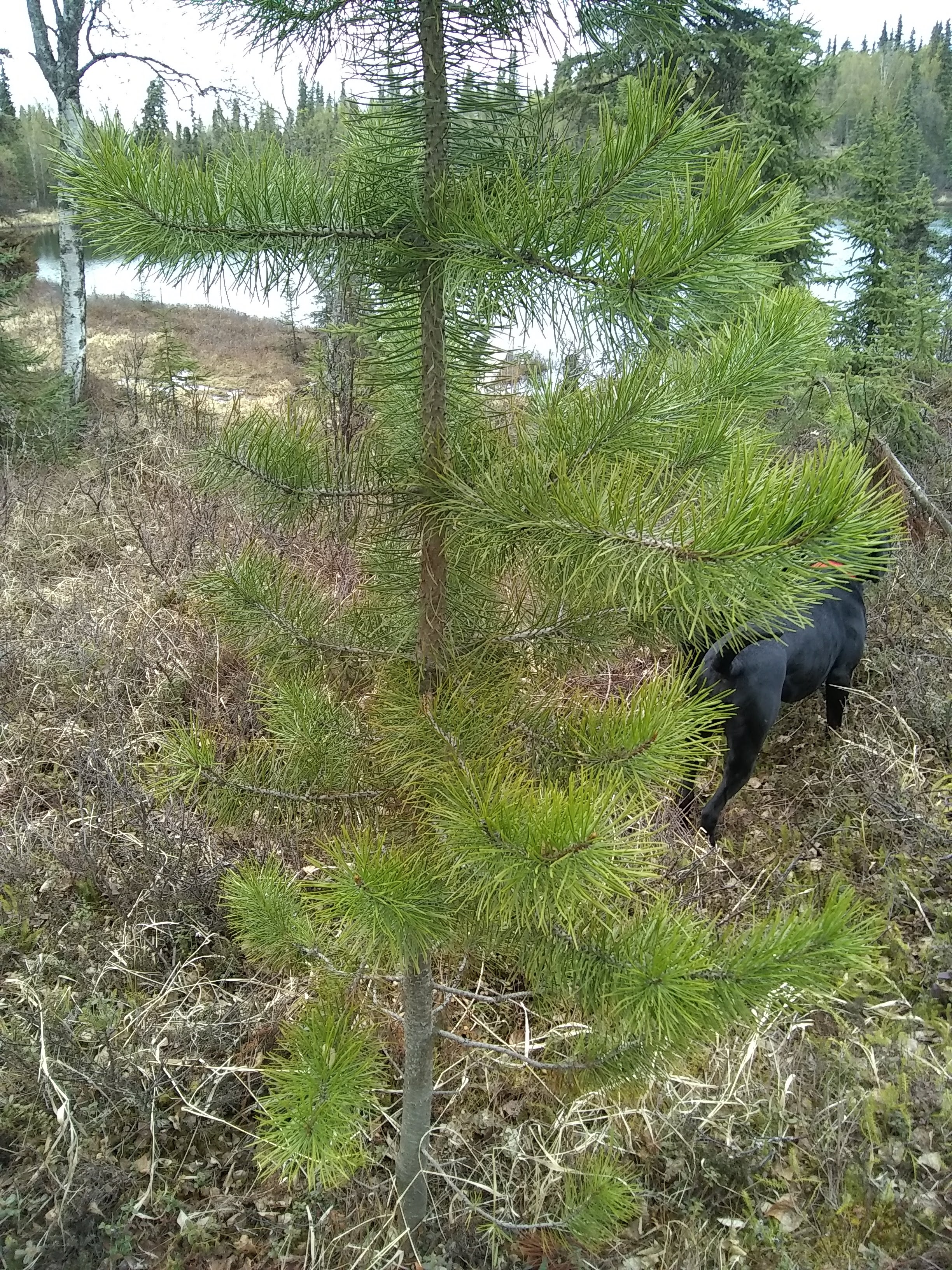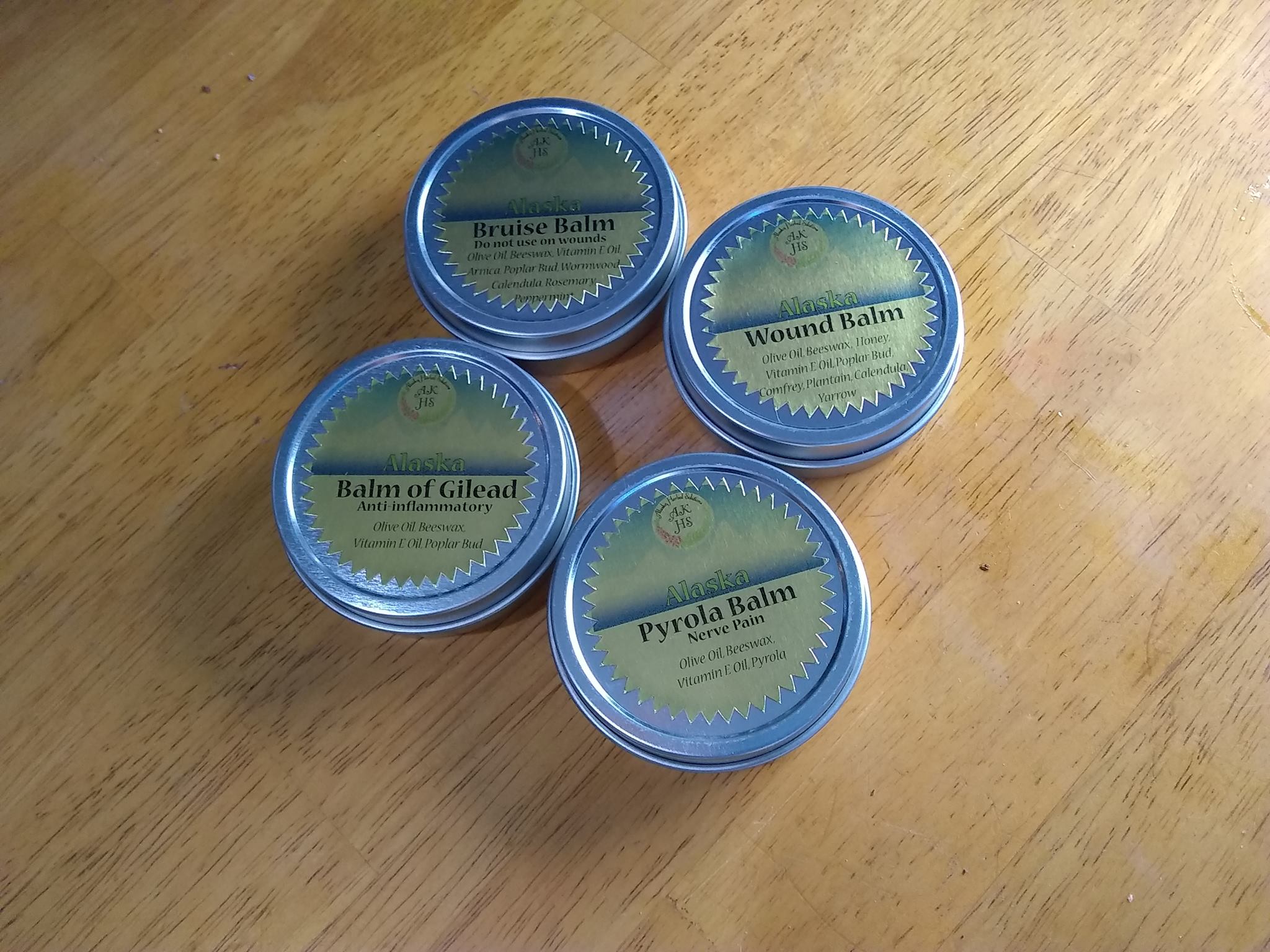Greetings everyone!
Last week we went over how to infuse herbs into oils using the hot method. Today we will go over the cold method. Let’s jump straight in!
What you’ll need
- Carrier oil (we’ll discuss this in another post) roughly one cup per 29 grams (see below)
- Herbs that you are going to infuse, depending on how “fluffy” the herb is will determine how much carrier oil you’ll need. The general rule is 29 grams (approximately one ounce) to one cup of oil.This goes for hot or cold. However, I have found with “fluffier” herbs like arnica or calendula I need to add about a cup more oil
- Stirring spoon
- (optional) Potato masher
- Measuring cup
- Container for the oil and herbs to sit in, for big batches I like to use pickle jars
Step one: measure out herb(s), crush. You can crush the herbs with your hands or with a potato masher. Because of the small openings, I recommend you do this in a bowl and then transfer it into the jar you’ll be infusing the oil in.
Step two: put into jar.
Step three: pour oil into jar. There should be about ¼ inch of oil above the herbs. That’s what a lot of recipes I have seen say. However, if you’re doing infusing cottonwood buds, there is going to be a lot more room. If you’re infusing “Fluffy” (meaning they are airy and will absorb a lot of oil) herbs, you may not have a line to go above. You can see in the picture below what I mean.

Step five: Let sit at least six weeks, best is four months. See my explanation below. I put a label on my jar stating what herb(s) and how much are in it, how much oil, when I started it, and what date it should be ready.Step four: stir. You can also shake it up if you want.
Step six: stir/shake regularly. Watch for condensation/mold. If this happens wipe condensation out or strain if mold to save. See below for more information.
Step seven: Strain herbs. Put your cheesecloth in the mesh strainer and either pour into a separate bowl or directly into the container. Use the potato masher to get as much oil out of the herbs as possible.
Step eight: put in container to keep or get ready to make a salve. If you don’t plan on making it into anything right away, make sure that it stays in a dark place.
I have seen many people recommend 4-6 weeks. A doctor that I know, Doc Spady, has experimented with different times to let the oil infuse and has found that four months is the most potent. It doesn’t hurt to leave it longer, but it does not become more potent after four months.
As for which method is better, I prefer doing the longer cold method because there is less chance of burning the oil. The downside is that you have to carefully watch for mold. The precursor to mold is condensation, which means that there was too much water in your herbs. We will go over how to prepare herbs for infusing oils. It’s not difficult, but it’s important make sure you get the result you want.
Thanks for reading! Next week we will go over how to make a balm out of the infused oil.




